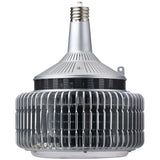Time Switches Offer Effective Lighting Control For Time of Day Driven Applications
Posted by Dave on for ProLampSales

Time switches, or timers, for lighting control allow for time of day ON and OFF scheduling for individual lights or lighting systems.
Generally, time switches work best with outdoor lighting where the time of day, along with sunset and sunrise, determine when lighting is on or off. Indoor applications for timers might include basic residential control of a single fixture to provide the "lived-in" look when the occupants are away from home.
There are three types of time switches:
- mechanical timers
- electromechanical timers
- digital timers
The sophistication of control options increases as you move from mechanical to digital timers.
Mechanical Time Switches
Mechanical timer switches use pins that manually are set at specified ON and OFF times. The simplest type of lighting timer, these timers are inexpensive and most often used for basic functions such as providing the "lived-in" look for homes. Generally, these are 24 hour timer units that plug into a wall outlet and a lamp is plugged into the socket on the side of the timer. Some timers have two sockets. With the pins set for specified ON and OFF times, the lamp will respond accordingly.
More complex mechanical time switches integrate photocell control along with 7-day scheduling and multiple circuits for commercial lighting systems.
Electromechanical Time Switches
Turn signals or flashers in automobiles represent on type of electromechanical timer. They rely upon the thermal expansion of metal strips. Electric current heats these bimetallic strips so that one side expands and moves away from the switch contact.
In most commercial and industrial applications, electromechanical timers use a synchronous motor that turns a cam through the switch contacts.
Electromechanical time switches automatically detect the input voltage without the use of a DIP switch or selector pins. Captive trippers are independently adjustable. Some electromechanical timers accept multiple voltages and can have many ON / OFF settings.
Usually, electromechanical time switches provide more lighting control options than basic mechanical timers.
Digital Time Switches
These switches, both 24 hour and 7 day, allow push-button programming for ON and OFF settings. Residential units can replace wall switches and mount directly in the existing electrical box to control all lighting on the circuit previously controlled by a manual switch. These units may have random ON/OFF functions to give a more realistic "lived-in" look as well as battery backup so the programming is not lost if there is a power outage.
A basic residential, in-wall digital timer may have 7 ON and OFF functions per week to allow for separate daily lighting schedules.
More sophisticated digital timers, generally used in commercial lighting applications, offer multiple voltage and amperage options, multiple channels, astronomic or automatic seasonal dusk and dawn adjustments, holiday scheduling and many ON/OFF set-points.
All of these digital timers include a manual override function. When used, this manual control normally does not affect the programming.
Time switches offer a useful energy saving control strategy for lighting when the ON and OFF functions are determined by time of day. Most outdoor lighting, including signage, fits this parameter. Some indoor lighting such as vacation time "live-in" look also fits basic timer functionality. However, most indoor lighting control strategies include other factors such as occupancy (occupancy sensor control) and availability of daylight (dimming control).
- Posted in Controls, Energy Efficiency
Featured Products (View All)
0 Comments




